This accounting of events is primarily for my own memory, reflection, and learning about social movement strategy. I took this project as far as I could go over the course of ten years that were compressed into two months, before handing it off to its next steward. Check out the slideshows to see a sample of the huge range of Palestinian solidarity protests and events organized in the US in November and December 2023.
Independent media/analysis/organizations to follow what is going on in Palestine and the movement at large: The New Arab, Al Mayadeen English, The Resistance Report, Let’s Talk Palestine, jakegyllenhalal, Palestinian Feminist Collective, Noura Erakat, The Grayzone, Imani Barbarin (crutches and spice), Marc Lamont Hill, Breakthrough News, Mondoweiss, uncivilized, Amanda Seales, The Anti-Empire Project, +972 Magazine, The Empire Files, Rashid Khalidi, Norman Finkelstein, Adalah Justice Project, BDS Movement, The Intercept. Electronic Intifada, Liberated Texts



When the events of October 7th happened, I felt what most people who knew any context knew: Israel is going to go on the most intensely murderous rampage against Palestinians to date. My context came from cross-campus antiwar organizing during the Iraq and Afghanistan war in the early-mid 2000s. As a CUNY student on a campus that reflected the diversity of the NYC’s global majority and working class communities, I did not have the luxury of leaving Palestine off the table the way the city’s biggest antiwar organization insisted on doing for “unity”. Through teach-ins, reading and conversation I learned enough to know that I stood with Palestine. Over the years I attended a few Palestine solidarity protests, but that was the extent of my activism. I had never interrogated Zionism and if I’m honest that’s because I was scared of being accused of anti-semitism. Nevermind my decades of anti-racist and anti-imperialist activism with many Jewish comrades at my side. I was not yet aware of Israel’s propaganda machine in the US and all the subtle ways it indoctrinates US Americans from childhood, embedding tiny filaments of Islamophobia and doubt wrapped in omnipotent victimhood. A lot of us were not aware of this before October 7. The brilliant thing about finding out you were wrong is that you then have a starting point for figuring out how to get it right.

I was only living in Buffalo, NY for five months on October 7th. Israel began airstrikes on October 9, ordered the evacuation of Northern Gaza and Gaza City on the 13th, and began a ground invasion of Gaza on the 27th. I did not know anyone in Buffalo besides my coworkers in the kitchen where I worked at the time and we talked about the unfolding events every day. On October 14th I saw some people with ceasefire signs on a busy corner in the Elmwood neighborhood and talked to them. They were from a local chapter of Women in Black and the Western NY Peace Center. I asked if there were any meetings coming up and one of the women invited me to one that was happening the next day in Black Rock.
The meeting was a group of elder peace activists that are part of a small liberal Christian community. We sat in a circle and began by sharing how we were feeling about the events. I recall feeling a bit alien at the mostly lukewarm responses, save for a member of Veterans for Peace who had been to Vietnam and the man to my left who stated that most of his favorite climate activists were Zionists and that he did not want to risk making them feel uncomfortable. I left feeling disappointed and alone, but even more determined to find some movement. I continued educating myself, seeking out Palestinian voices as well as anti-Zionist Jewish voices.
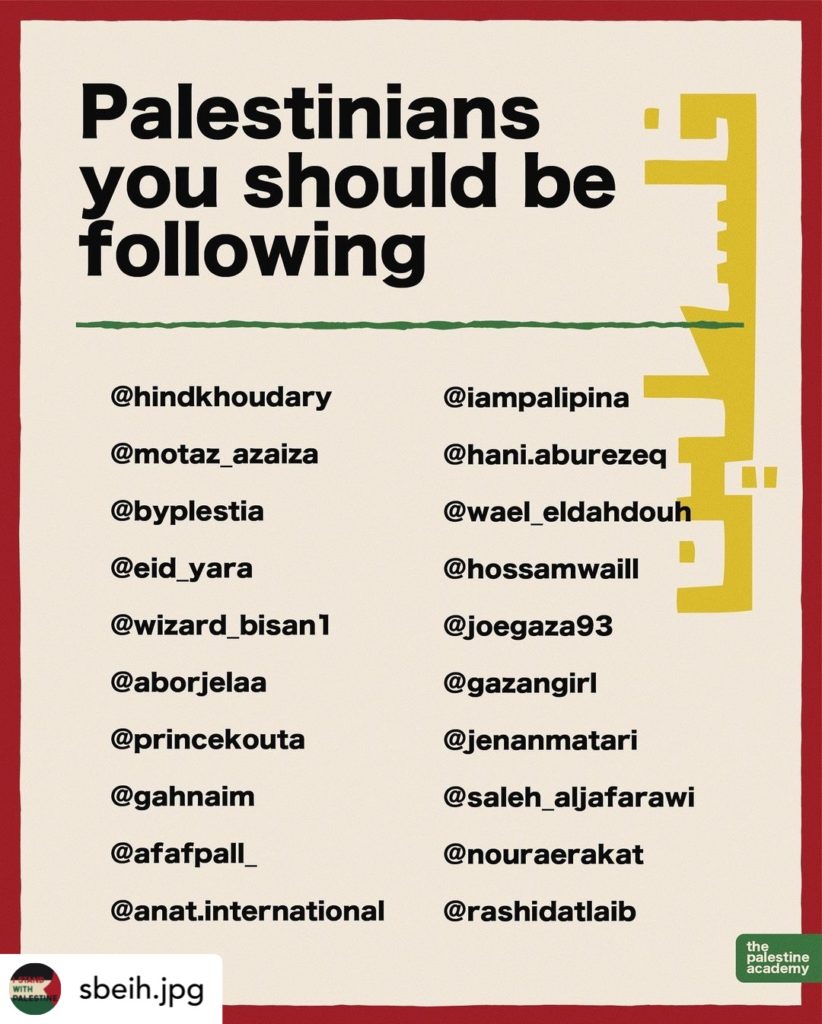

The Palestinian Youth Movement , Within Our Lifetime , and Students for Justice in Palestine emerged as three of the first key groups I noticed were coordinating the global days of action for Palestine in North America and Europe. Led by young Palestinians in the diaspora, these groups were crucial to bringing the language of settler colonialism, ethnic cleansing, apartheid, and occupation out of the abstract and into a framework that would empower millions of young people to start challenging the Israeli talking points being regurgitated by every single mainstream media outlet in the Empire. At the same time, Jewish Voice for Peace was mobilizing its members join large scale civil disobedience in NYC, Los Angeles and a few other cities, bringing anti-Zionist Jewish narratives to the fore to break apart the idea that criticizing Israel was the same as anti-semitism.
I found the local chapter of Jewish Voice for Peace by the end of October, and went to a meeting shortly after. This first meeting I attended was about organizing a protest on November 18, and it was attended by leaders from the local Muslim community who were co-organizing. The plan seemed to already be decided on, so there wasn’t much for me to do. I suggested that we think about organizing another event or action so we could invite people at the 11/18 protest, as the global days of action were being called every two weeks by that point. There was no support for that idea at the meeting, so I let it go and hoped something more would eventually emerge from the growing assemblage of people that I knew existed beyond the bounds of that meeting. The November 18 protest at Niagara Square in downtown Buffalo was well-attended by a broad swath of Buffalonians, including many from Buffalo’s diverse Muslim and Arab communities, Students for Justice in Palestine at UB, and Refugee Alliance International. It was a relief to be around so many people that were speaking up in support of Palestine, as the death toll in Gaza had exceeded 20,000 by then and repression against pro-Palestine activists all over the country was on the rise.



I was made hopeful by that protest, but was still looking for a way to contribute to building the local movement. I had a lot of experience with union and social movement organizing, as well as a growing sense that the movement was fusing together at so many different intersections. The demands from the Palestinian Resistance were clear: Ceasefire, than End the Siege, than End the Occupation, then End US Complicity in Zionism. I knew that we in the US had a special responsibility in all of this since Israel could not carry out its massacres without billions of dollars in military aid, and I assumed that meant mobilizing as many people as possible at the local level and pushing together was the only hope we had to accomplish that. It was also clear that while support for Palestine among Generation Z was extraordinarily high, that did not necessarily translate into action outside of social media, owing mostly to a lack of experience or on-ramp to take such an action.
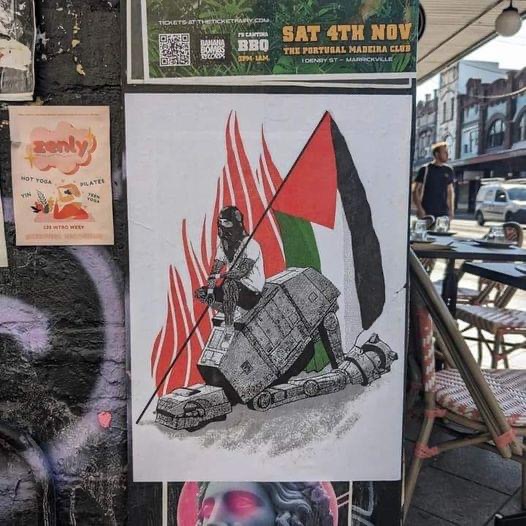
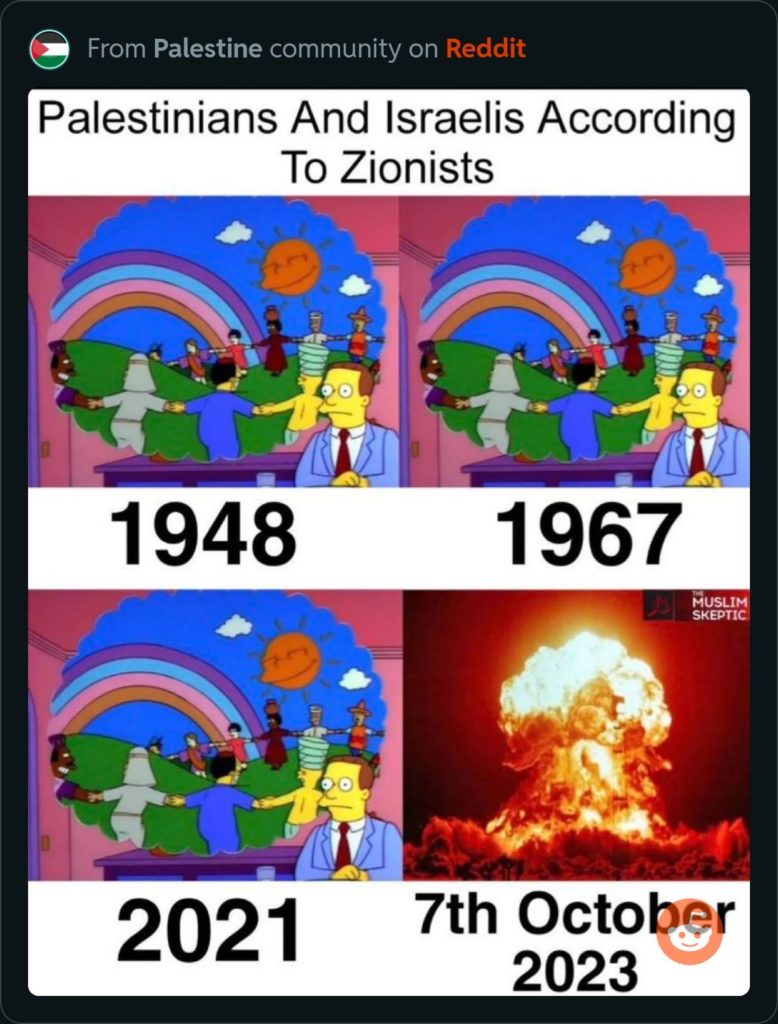

I went to a couple more JVP meetings, but still couldn’t find a way to contribute meaningfully to building the local movement. The images coming out of Gaza were unbearable and I couldn’t keep standing by and doing nothing. I decided to start Gaza on Main simply as a way to put that energy into motion and fight off the growing despair. My coworker and I hatched out an idea to do a weekly protest where we would walk up and down the Main Street pedestrian corridor near our work and talk to people about the unfolding genocide in Palestine. We secured an Instagram page and I made some fliers to hand out that had a QR code to a list of Palestinian journalists to follow on social media and a QR code leading to the Gaza on Main Instagram page. I made a large sign to carry that had the Palestinian death count, updated every week. I saw these weekly protests as a way to “jump into timelines”, confronting and engaging people outside of their own echo chambers and letting them know we are not afraid of speaking out about genocide. Every week at least one person who followed the page would come out and do the walk with me. Walking up to strangers to talk to them about Palestine was awkward for pretty much everyone who came, but we would always find people that wanted to talk to us and it got better.
My goals with the Instagram page were in the traditional realm of educate!, agitate!, organize! Education involved fighting propaganda and humanizing Palestinians by sharing quality content about the history of Palestine, Zionism, and US imperialism. Agitation involved “sharpening the contradictions”, exploring all the ways that Israel holds up a mirror to the US and what the multifaceted Palestinian Resistance teaches us about long term struggle. I found so many fantastic accounts by individuals and organizations connecting to the movement in so many different ways: anti-colonial struggle, Islam, Black and Indigenous liberation, Queer liberation, disability justice, immigration, geography, anti-capitalism, employment sector, trauma and mental health, film, spirituality, school, art, journalism, academics, music, and many more that I can’t remember. For two months, I spent upwards of five hours a day tracking down content for the page.
In early December a local activist that followed the page reached out and invited me to help organize a protest she was planning. A group of about ten people met on a Sunday, made a protest plan for a Memorial Rally for Palestine the following Saturday, and then spent the next five days putting all the moving parts together to the best of our ability. It was a lot of work and we did not have many resources, but the protest was well-attended and successful in temporarily disrupting the Christmas tree lighting in Fountain Square. Always thinking about organizing, I made and distributed flyers for the next protest we hoped to organize on the theme of “Christmas in Bethlehem is Canceled”. While handing out flyers, I met some women leaders from the local Palestinian community. They were happy about the protest, but frustrated with us for not advertising it enough or with enough notice.
[From my vantage point on the Instagram page, I could see the global movement starting to cohere at different scales, spreading deeper into society, causing a lot of people to deconstruct the narratives that they were indoctrinated with as children; sharing their art, raising money, reading books, talking freely about decolonization, going to protests all the time, grounding themselves, countering propaganda. In my mind the movement already existed but needed to be sewn together by a network of seamstresses for Palestine. I could see a lot of people feeling heartbroken and wanting to connect with other Palestine supporters to exchange emotional support, discuss strategies, and share meals. In my imagination this movement was like a network of myceilum sprouting connections with local social movement groups and flowering new ones; the very same movement that will share resources across the city and support eachother when things start to fall apart due to climate change and infrastructure failure. We might as well get to know eachother now.]
One woman asked if we were organizing a protest for that following Monday, which was the first of the Global Strike for Palestine actions that were spreading around on social media. I told her we did not have the capacity, but she was determined so we exchanged numbers and agreed to work on it together. I really did not have much to give, but I tried anyway by making a post on the Instagram page and inviting people to volunteer for a few small tasks. At this point the Instagram page had a few hundred followers so I got some responses and did my best to coordinate with them all that day. The next day at noon, about 100 people showed up in the freezing cold and blustery wind for the protest at Niagara Square. I handed out stacks of informational handbills for people to share, and had conversations with some people I only knew from via the Instagram page. I met a woman whose school-aged daughter had begged her to go to the protest. It was clear to me that there was a lot of pent up energy and that people wanted to do more. But there are limits to what any of us can do alone.
The group of people that had organized the Memorial Rally for Palestine and a handful of interested community members met that following Wednesday to debrief and plan for the next protest. The meeting was very long and the leader I invited was frustrated that a clear plan of action hadn’t emerged from that meeting. As the director of a nonprofit for refugees, a mother, a wife, and soon to be grandmother with a lot of responsibilities, I knew her time was really limited. I just didn’t know what to tell her. There were a few different groups of people and Instagram pages in Buffalo that had organized solidarity actions over the previous months, but there was not real coordination or consistent communication. Soon after that meeting, one of those Instagram pages announced a Car Rally for Palestine on the same date that we had planned to do the Christmas protest. After some discussion, the group decided to not hold a competing protest on that day. I had gotten several messages from followers of the page, however, saying they were interested in Christmas flyering, so I created slides with instructions for an asynchronous flyer blitz and posted them on Instagram. It was experimental like everything else, but I felt strongly that Christmas was a strategically valuable opportunity to do the necessary work of humanizing Palestinians.




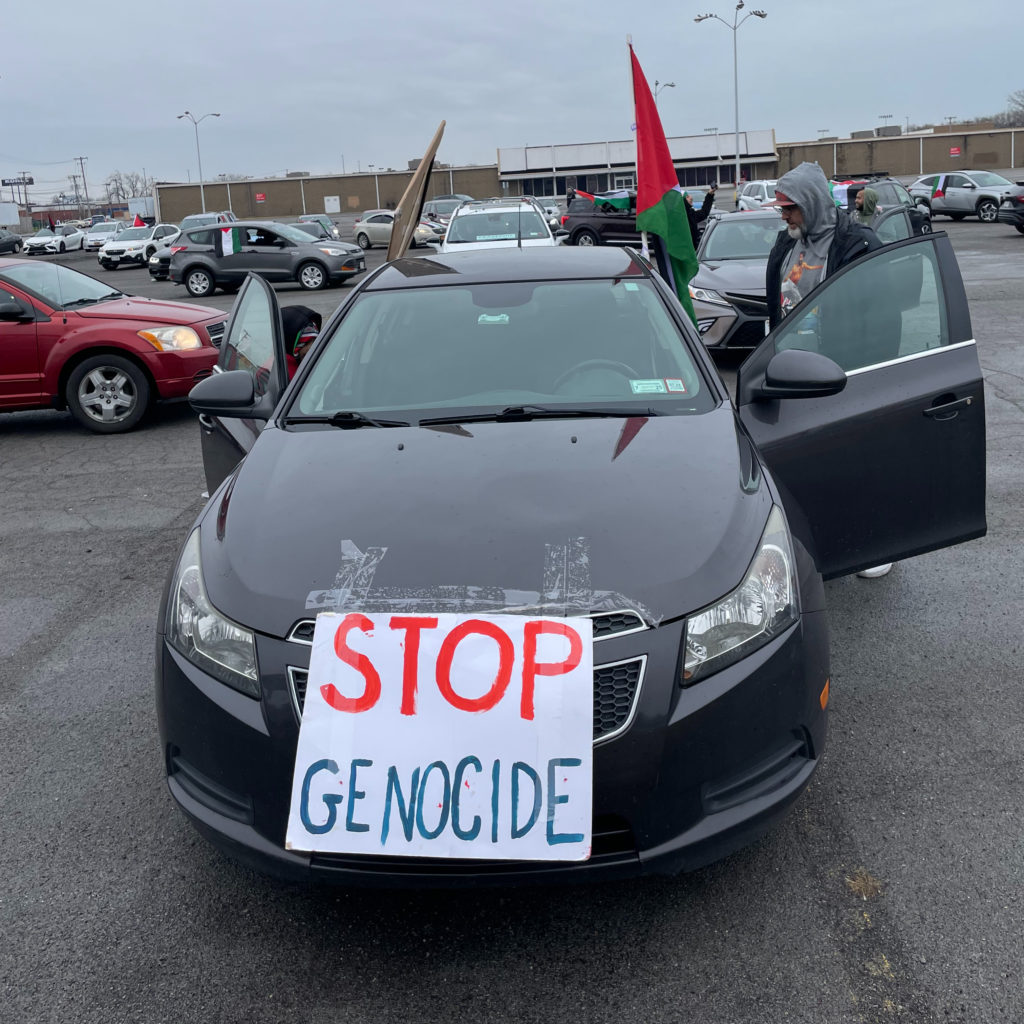
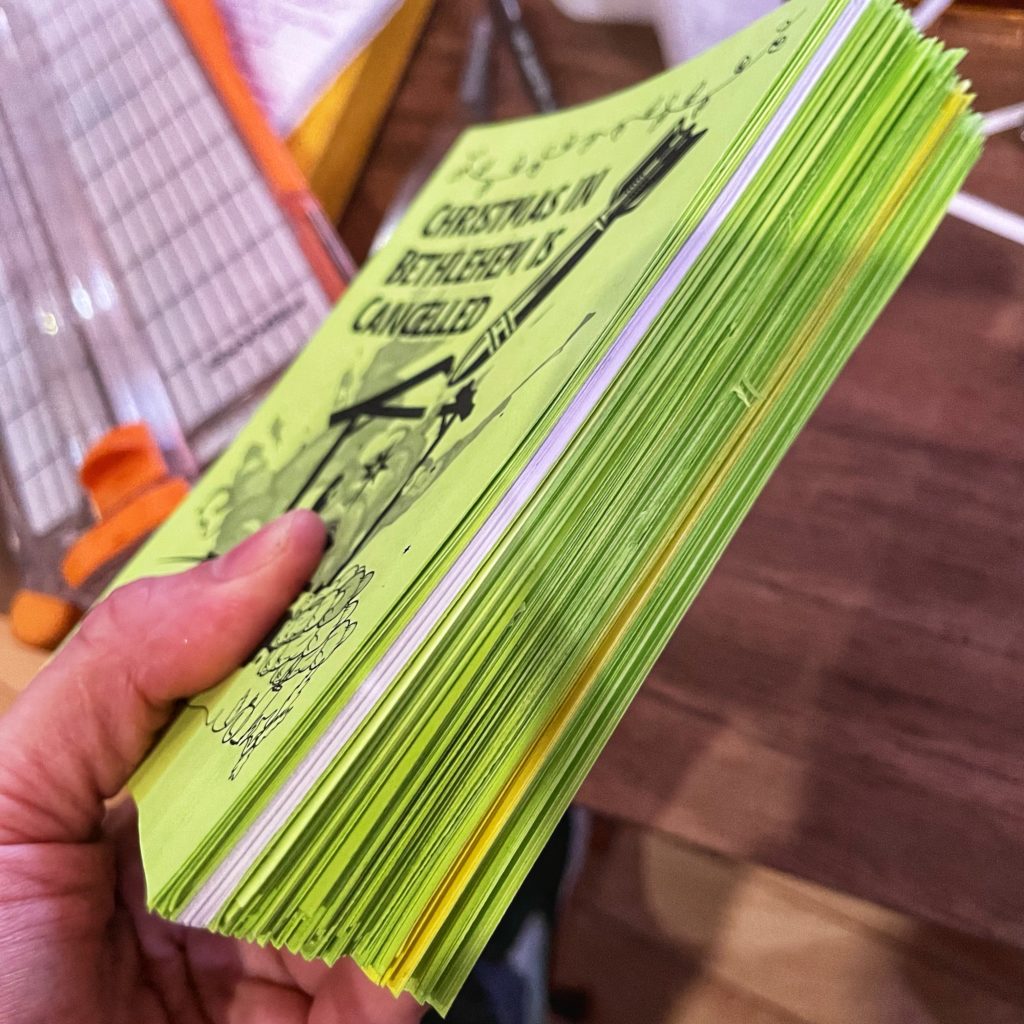
In an attempt to forge greater solidarity with the Car Rally for Palestine organizers, I shared their event post on the Instagram page and brought a stack of “Christmas is Cancelled in Palestine” flyers to give out at the rally. My partner and I attended the event, which was primarily attended by neighbors from Buffalo’s diverse Muslim and Arab communities. The car rally had a real impact, weaving throughout North Buffalo and slowing down last minute Christmas shoppers. We passed a lot of supporters along the way who honked their horns and held up fists in solidarity. The rally stopped for about a half hour on Hertel Ave., but we were too far back in the caravan to see what was happening. When I got home, one of the women I had met at the last protest sent me a 3-minute long video of a very aggressive Zionist man blocking the way of the Car Rally, screaming that we are all Nazis: this was why the rally had stopped. I shared the video with the rally organizers, who showed me their own footage of what had happened. At this point I was very studied in the way that Israeli propaganda worked. I suggested we make a video and write our own narrative, so we got permission to use the footage and one of the organizers edited it together. I put together a minute and a half script, giving context about the peaceful protesters and the community security that helped deescalate the situation in the absence of a police escort. It turned out great and was shared widely.
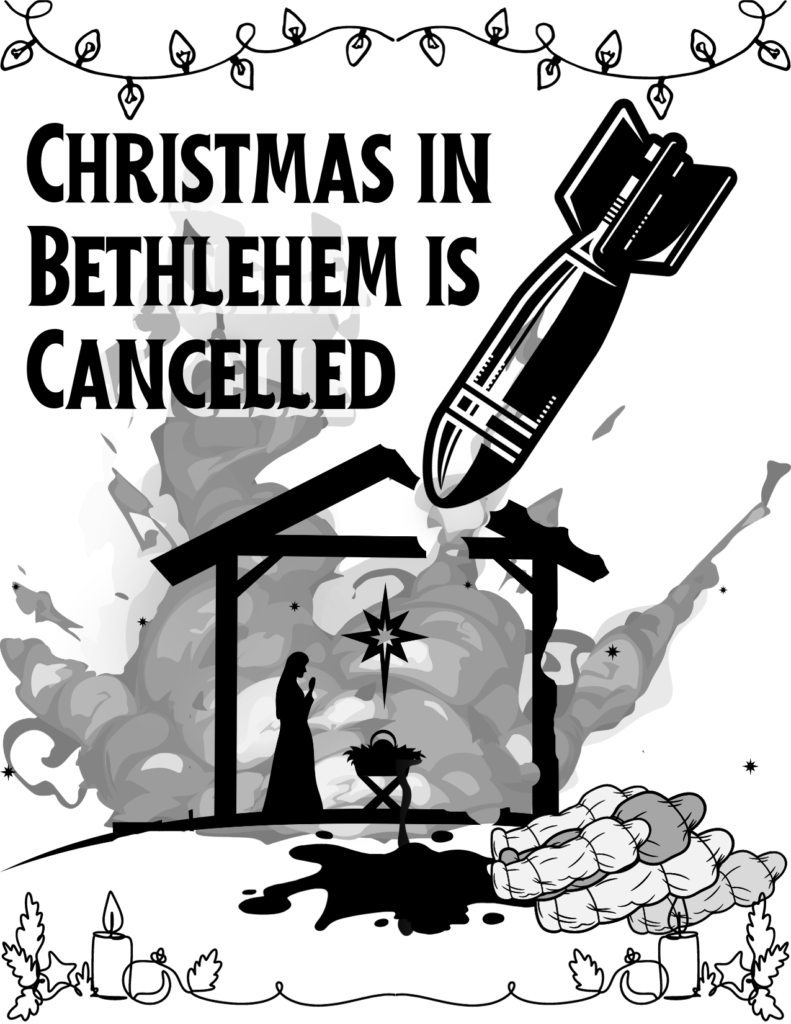

The next evening, Christmas Eve, an activist from the South Towns and I met up at the Lackawanna Basilica for midnight mass. At this point, even Pope Francis had called out the atrocities being carried out by Israel. We posted up at the entrances and handed out the “Christmas is Cancelled” flyers to people as they went in, visibly angering only a couple of people. Once everyone was inside, we flyered every single car in the parking lot; there were hundreds. We talked as we placed the papers under wipers and I realized that I had exhausted myself and seriously neglected my relationship with the most important person in my life. I had been going non-stop for a while at that point, forgetting to eat and zoning out in front of my phone for hours at a time. Even my cat was annoyed with me and would head-butt my phone as I sat there on the couch, staring into my little genocide box. I knew I needed to moderate, but every time I saw another horrific image coming out of Gaza I became overwhelmed by the feeling that my life only mattered insofar as I could do my part to end this genocide.
I felt like I couldn’t rest until there was some kind of hub in place that facilitated communication among groups as we worked towards a coalition capable of strategically using our strength in numbers. I could see a plurality of affinity groups forming and linking to the hub, autonomous in their decision-making but able to coordinate on bigger projects. 66% of US Americans now supported a ceasefire, but most of them had not taken any kind of action towards making that a political reality. Some of the organizers I had worked with formed their own group that I was definitely too old for, so I doubled down on finding a way to that hub. I found a Palestinian-led campaign called Allies Against Apartheid that had formed in Cleveland and reached out to them to see if they were organizing in other cities. They said they were starting to, so we talked and I decided to give it a go. It was a simple campaign that involved getting people and local businesses to pledge to take political action in support of Palestine, and displaying AAA watermelon stickers to show that support publicly. They would help us with an Instagram page that would be a central place to post events, as well as collecting contact information of supporters.
It was not a perfect campaign, but I saw it as a way to “make the road by walking” in the absence of a local Palestinian solidarity organization, anchor organizations capable of taking the lead, and resources for organizing. I started meeting with as many people as I could to talk about the campaign, most of whom I had met through the Instagram page. I would be starting a graduate program in a few short weeks, so my time was limited. At the same time, new people were joining in the weekly Gaza on Main protests and one of them brought a beautifully-painted bass drum. After the success of the drum, another follower of the page bought us handwarmers and a bunch of hand held percussion instruments. I was so tired by then but I kept on meeting with people and eventually got a bunch of them on a Zoom call with the AAA organizers. By the end of the call I saw that there wasn’t enough support for the campaign to launch it, that there would be no safety in visibility for the local Arab and Muslim community if the campaign was not spreading through the community, and that working at odds with the people and groups I wanted to bring together was a terrible strategy for building power.
With the disappointment of that failure, I hit a wall. The despair and exhaustion took over and I decided to step back from Gaza on Main. By then the page had more than 900 followers, but I was not interested in cultivating followers in the social media realm if it wasn’t building towards something more. I took a breather, took Instagram off my phone, and attempted to calm my mind enough to start classes. I cried a lot. I felt tremendous guilt. I started going back to muay Thai classes to burn off some of the accumulated rage and sadness. And then, to my relief, the artist with the drum offered to take Gaza on Main off my hands. Letting the project go so that it can flower under the nurturing of someone else gave me enough peace to shift my focus to the environmental crisis and the university BDS campaign. I’m hopeful that some kind of coalition will eventually come together in Buffalo, but I have relieved myself of the job of trying to make it happen for now.

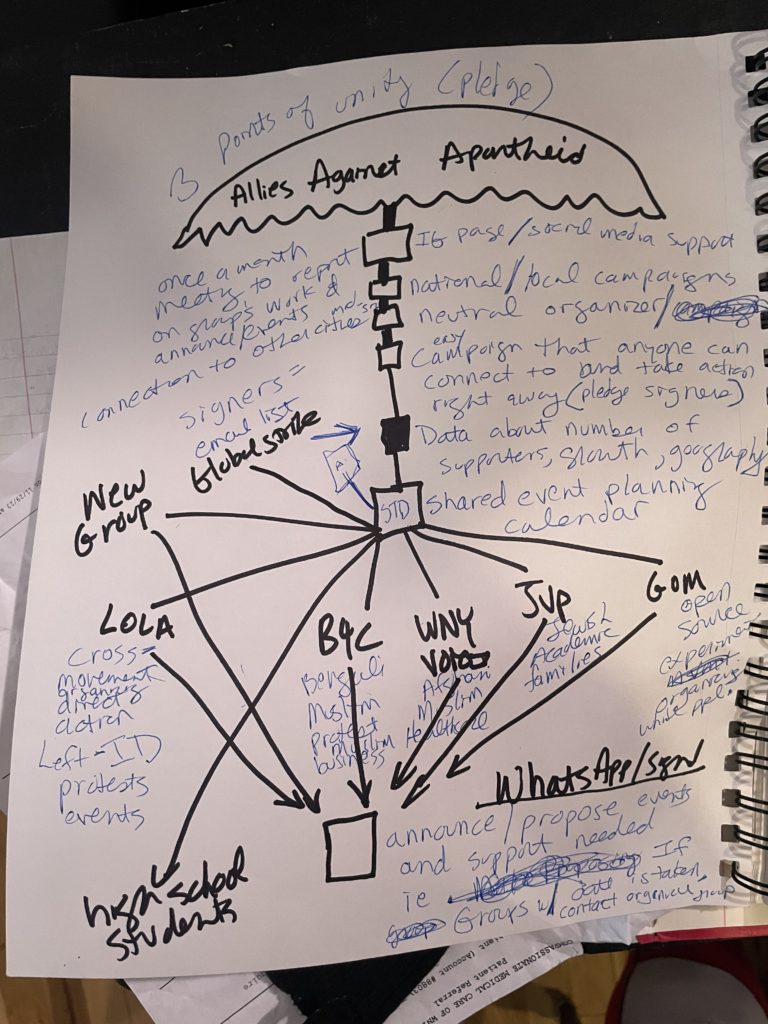

Questions I’m thinking about:
- Do US Americans have more power as workers or consumers in 2024?
- Where are Israel and the US most vulnerable in terms of labor, supply chains, natural resources, information, public opinion, infrastructure, climate change, etc.?
- How can a movement effectively “hurt” a monopoly? Where are the choke points?
- Can US activists legally pool resources to strategically support mass worker actions in countries where the US dollar has more value relative to their currency (a movement version of geoarbitrage)?
- When it comes to resistance, is intention more important than impact or strategy? Is individual self-expression more effective than collective action in late capitalism?
- Does assuming that the US Empire is crumbling (or at the very least losing significant ground as the world becomes multipolar) affect movement strategy?
- What if we just acted like we knew we were going to win, and then doubled down on building communities and networks of care and resistance because we knew that’s the path that would take us there?



























































































































































































































